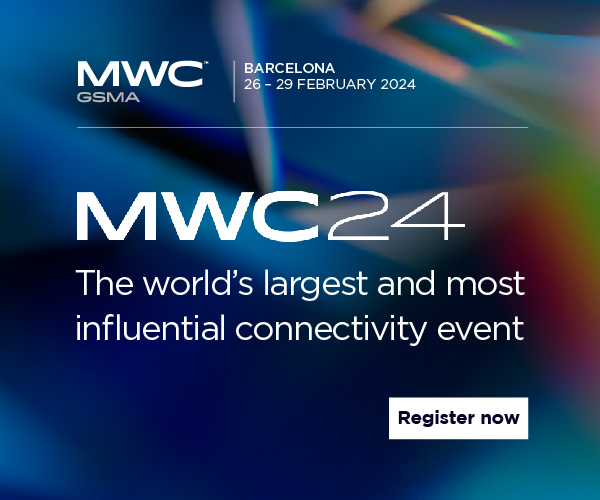During MWC Barcelona 2024 Roque Lozano, Senior Vice President of Network Infrastructure MEA at Nokia, discussed the digital gap and opportunities ahead in Africa’s network infrastructure during an interview with Akim Benamara, Founder & Chief Editor of TechAfrica News.
Could you provide insights into Nokia’s infrastructure initiatives in Africa and share your perspective on your market presence and impact in the region?
In terms of network infrastructure, we believe we offer significant value through our end-to-end capabilities. We provide submarine networks, terrestrial networks in the optical domain, and all layers of IP connectivity, including data centers. This means we can offer connectivity from the sea to individual homes. This comprehensive approach is crucial as we address the digital gap across various segments.
We’re witnessing a surge in traffic on submarine networks, which is a positive trend, but there’s still a gap in optical connectivity within countries, particularly in Africa. Even in urban areas, including business districts, enterprises are struggling to connect to the cloud efficiently. Africa presents a compelling market due to its diverse segments, all striving for improved connectivity and digital services. This regional approach to connectivity is vital as we see connectivity patterns shifting across Africa and the Middle East. The opportunity for growth is not just for us as suppliers but for the entire ecosystem. I view the digital gap not as a problem but as an opportunity. Regardless of whether you’re in a city or a rural area, better connectivity leads to improved digital services, cloud accessibility, and overall competitiveness.

You mentioned limitations in developed cities regarding network infrastructure. What do you think are the reasons behind this, and is it due to insufficient investment?
It’s a combination of factors, but one significant difference in our approach now is how networks are planned. Historically, networks were planned from the bottom up, following a public forum system, with a focus on short-term CapEx and OpEx challenges.
However, with the emergence of cloud services, the demand has shifted to top-down requirements, emphasizing scalability, security, and long-term investments. This mismatch between traditional network planning and current cloud requirements has led to inefficiencies. Additionally, the importance of latency and security in cloud services has highlighted shortcomings in existing networks. To address these issues, we need to rethink our network planning strategies, focusing on long-term investments and adapting to the evolving needs of cloud-based services.
Should the focus be on developing a robust network infrastructure before advancing to technologies like 5G, or should there be a simultaneous push towards multiple technologies?
Some years ago, we were discussing the arrival of 5G and the importance of the network, and then the significant focus shifted towards the cloud where the network was important again. Following that, the discussion on metaverse applications emerged and the network was again important. Presently, we are delving into artificial intelligence, once again highlighting the importance of the networks.
Roque Lozano, Senior Vice President of Network Infrastructure MEA, Nokia
The reality is, you cannot predict the key driver of your business; technology evolves rapidly, consequently altering business models. However, what you can control is the quality of your network. From my perspective, the most secure investment lies in possessing a rock-solid, secure, and open network, equipped with scalability and other essential parameters. Undoubtedly, investing in the network is the only way to ensure the widespread adoption of any service or combination of services, considering the plethora of innovations on the horizon. So, begin by thoroughly assessing your network requirements; perhaps assistance from Nokia could be invaluable.

What does Nokia offer for developing markets, especially considering budget constraints?
We offer planning and design services, including business case development, through our reputable Bell Labs Consulting. These services are vendor-agnostic, focusing on digitization efforts at a country level. Additionally, we recommend approaching network development segment by segment, focusing on actions that deliver tangible benefits without requiring massive investments.
This incremental approach allows for quicker value realization without boiling the ocean. We’re also involved in initiatives like the Global Gateway Project, facilitating access to international funds for digital development. Our goal is to provide tailored solutions that address specific needs, leveraging our diverse portfolio to support network evolution in developing markets.
What outlook do you have for Africa in terms of opportunities over the next five to ten years?
Africa represents one of the most significant growth markets globally, with its young population and low digital penetration. As over half of the world’s population growth is expected to occur in sub-Saharan Africa, the potential for connectivity and digital services is immense. Digitalization is not a luxury but a necessity, and Africa’s journey toward inclusivity in the digital realm is inevitable.
With the arrival of submarine cables, connectivity gaps are gradually being bridged, bringing Africa closer to the internet. This presents unparalleled opportunities for growth, innovation, and socioeconomic development. Africa’s digital future is bright, and Nokia is committed to playing a pivotal role in shaping it.
Roque Lozano, Senior Vice President of Network Infrastructure MEA, Nokia











